I have some code which generates collages from sets of photos, im doing this by averaging the pixels' colors of the images themselves and eventually, after a certain manipulation i just point(x,y) with the averaged color. The only problem is that when I zoom on retina screens (above certain resolution) it is very visible that this is indeed a bunch of points on the screen and not 1 complete image. I guess it has something to do with pixelDensity() but after a lot of experimentations with that, it didn't help as well.
attached here is an example of a zoomed crop -

The main loop which combines the pixels is very basic and looks like this -
for (let y = 0; y <= imgOne.height; y++) {
for (let x = 0; x <= imgOne.width; x++) {
// Get the colors.
const colorOne = imgOne.get(x, y);
const colorTwo = imgTwo.get(x, y);
let avgRed = (red(colorOne) + red(colorTwo) ) / 2;
let avgGreen = (green(colorOne) + green(colorTwo)) / 2;
let avgBlue = (blue(colorOne) + blue(colorTwo) ) / 2;
stroke(avgRed,avgGreen,avgBlue);
point(x, y);
}
}